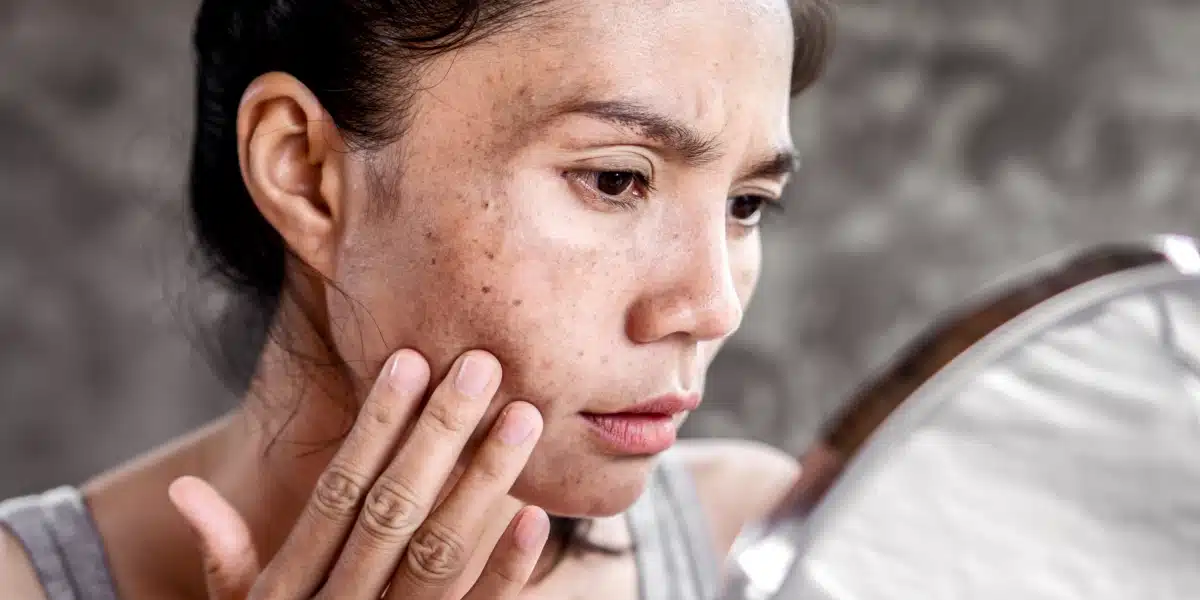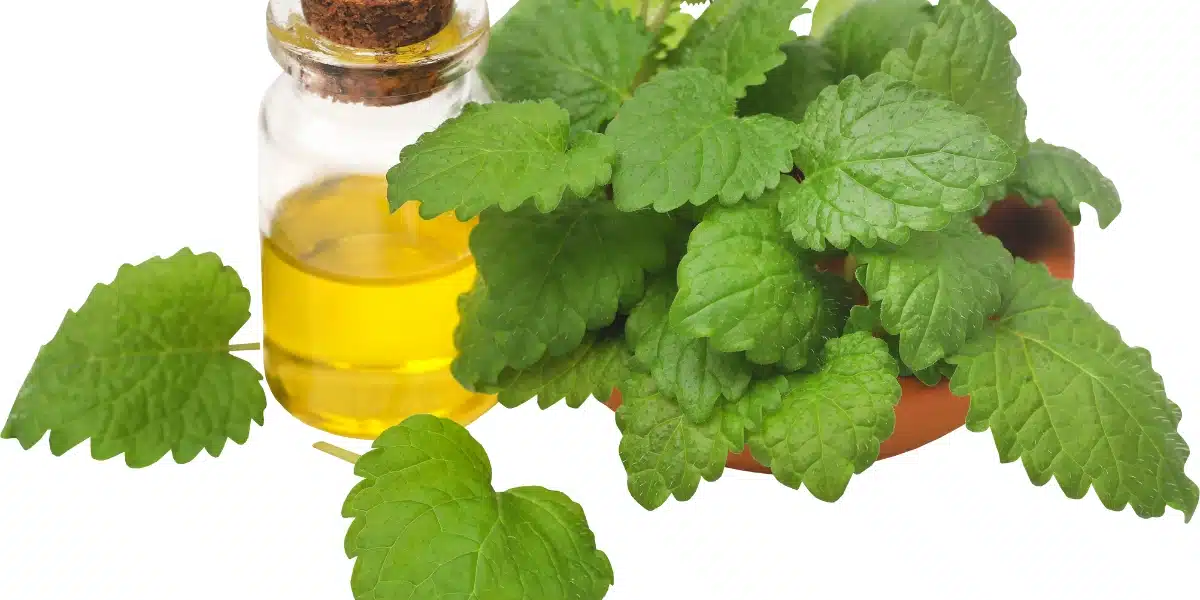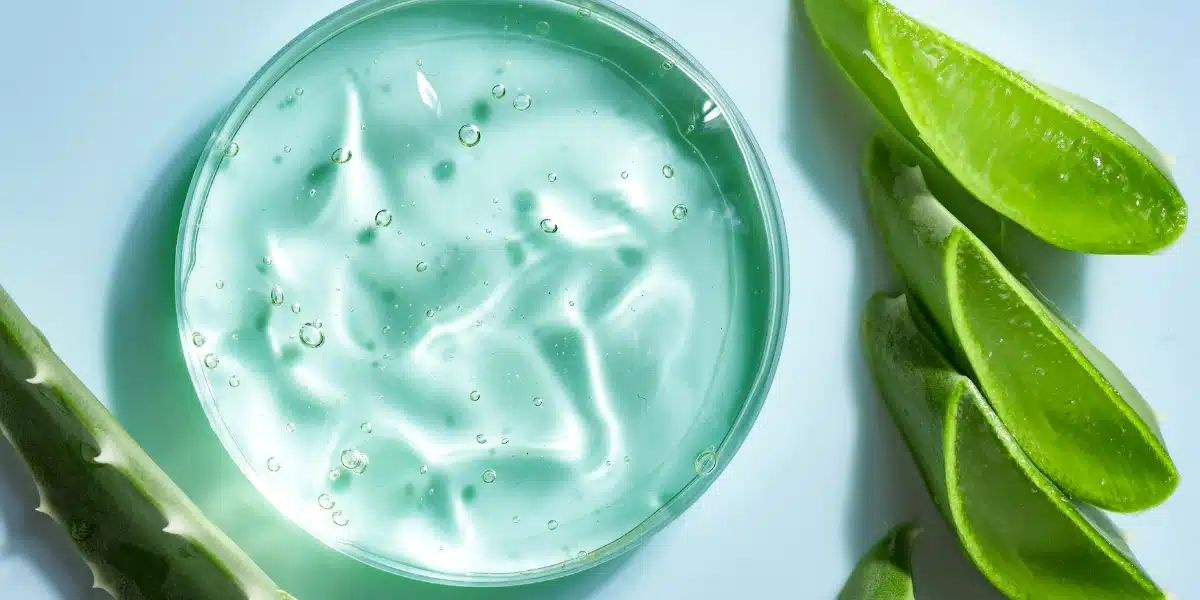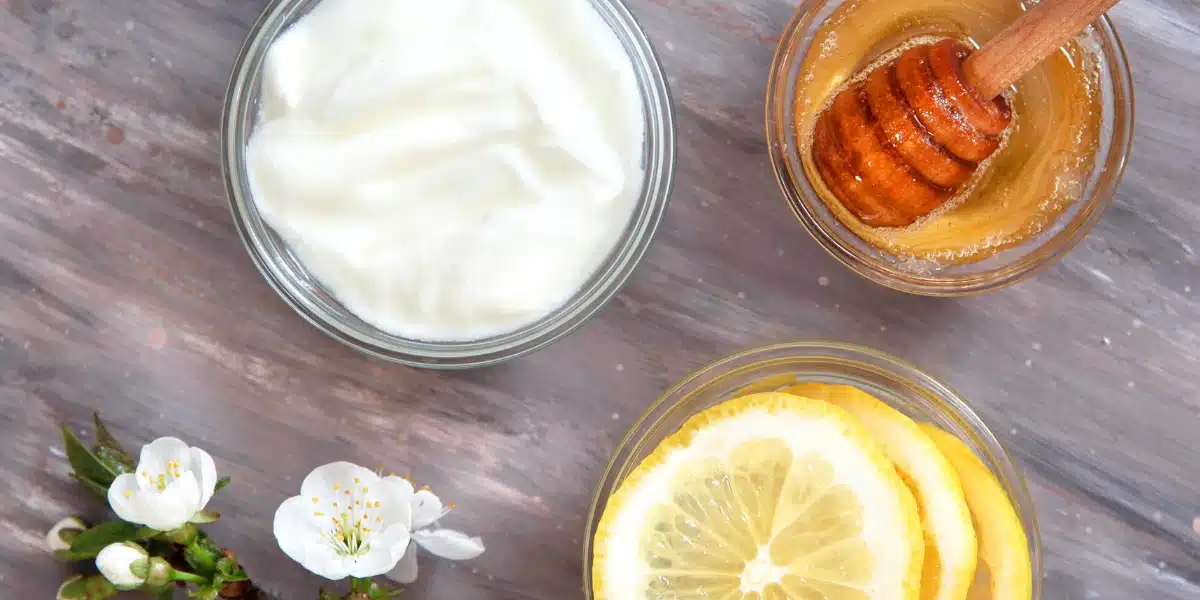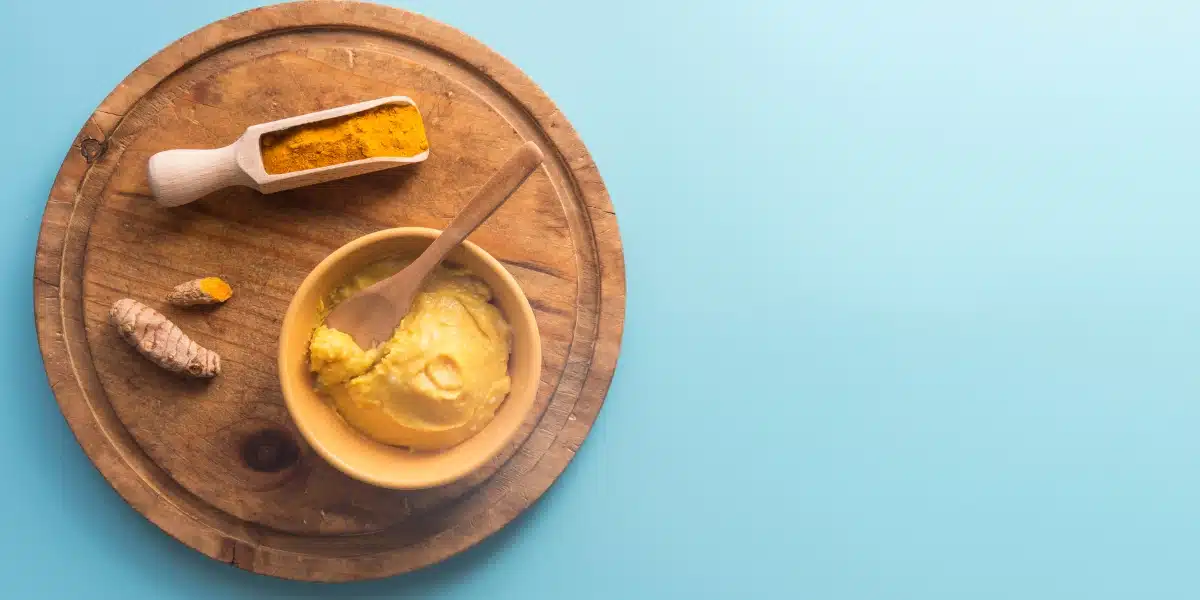Blog
How to Naturally Remove Dark Spots at Home: Causes & Remedies
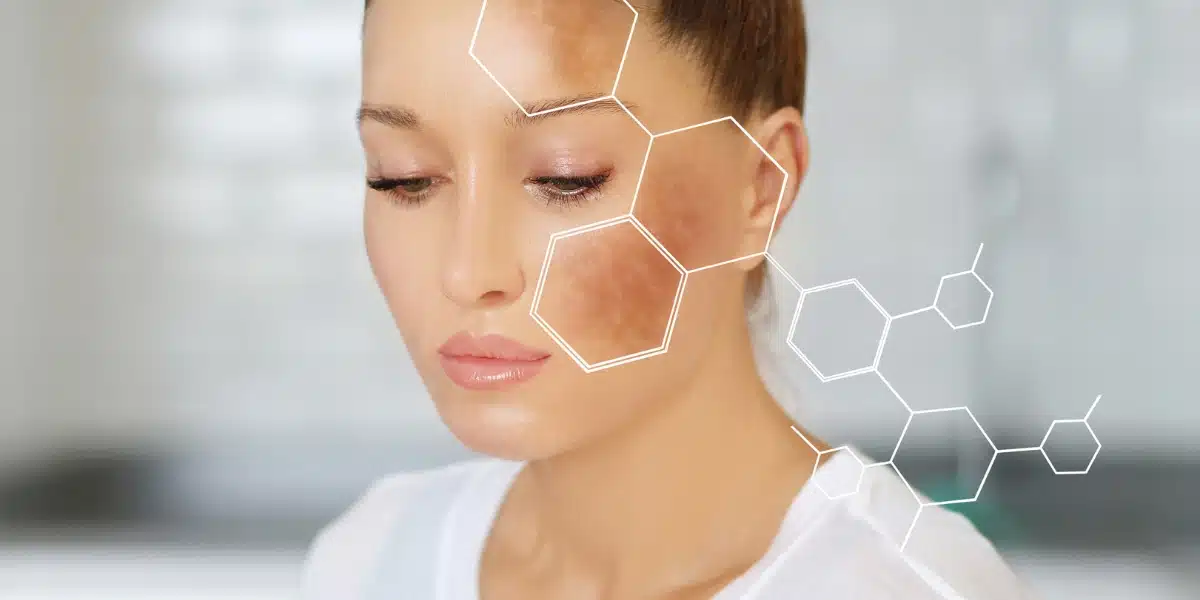
Are you wondering where to go to reduce or eliminate those dark spots on your face? If you’ve had too much sun exposure then you can most likely blame that for those dark spots, known as hyperpigmentation. But here’s the thing, it’s not just external factors that cause those frustrating dark spots on your face and body. Aging, acne, pregnancy, prescription medication and hormonal imbalances are some of the other culprits.
Those dark spots occur when your skin produces more melanin, which gives your skin its color. The good news for you is that there are different ways to treat hyperpigmentation including strict sun protection, topical medications like Retin-A, chemical peels, manual exfoliation, glycolic acid pads, microdermabrasion, laser treatment, a great concealer, and more.
In this comprehensive guide, we will explore the causes of dark spots and share effective ways to manage and prevent them, revealing a path to a more luminous and even-toned complexion.
WHAT ARE DARK SPOTS?
Dark spots or brown patches are areas of pigmentation that form on the skin. They appear when melanin – which is the pigment that determines the color of your skin – is overproduced. This results in a patch of skin being darker than the surrounding skin. Dark spots on the face are particularly common, although dark spots on the body also affect many people.
4 COMMON AREAS FOR DARK SPOTS?
Dark spots can appear on various areas of the body due to factors like sun exposure, aging, hormonal changes, and skin trauma. Here are four common areas where dark spots often occur:
1. Face:
Dark spots on the face are very common due to the face’s high exposure to sunlight and the delicate nature of its skin. Dark spots, hormonal changes, and post-inflammatory hyperpigmentation can all contribute to the face’s uneven skin tone and discoloration.
2. Hands:
The hands are frequently exposed to environmental aggressors, including UV rays and pollutants. The skin on the hands is thinner, making it more prone to hyperpigmentation from sunspots and age spots.
3. Chest:
The delicate skin of the chest is frequently exposed to the sun, making it susceptible to dark spots. Low-cut clothing and the cumulative effects of sun exposure over time contribute to the development of dark spots on this area.
4. Back:
The skin on the back can be sensitive to friction, clothing and environmental factors, making it prone to skin trauma and acne. This can lead to post-inflammatory hyperpigmentation and the formation of dark spots.
WHAT CAUSES DARK SPOTS ON THE FACE AND BODY?
Understanding the main causes of brown patches on the skin can help you avoid them in the first place. While some causes are unavoidable, recognizing why you’ve developed dark spots can guide your prevention efforts.
For more tips on maintaining healthy skin, check out our article on Dry Skin: Causes, Symptoms & Best Remedies. Here are the most common causes of dark spots on the skin:
1. Sun Exposure:
Prolonged exposure to the sun’s ultraviolet (UV) rays triggers an increase in melanin production, leading to the formation of dark spots. This is particularly true for areas frequently exposed to sunlight, such as the face, hands, arms, and shoulders.
2. Hormonal Changes:
Hormonal fluctuations can contribute to the development of dark spots. Conditions like melasma often arise due to hormonal imbalances, leading to patches of hyperpigmentation and dark spots on the face.
3. Post-Inflammatory Hyperpigmentation (PIH):
Inflammation caused by acne, insect bites, or other skin trauma triggers an overproduction of melanin. As the skin heals, spots can form, especially in individuals with darker skin tones.
4. Genetics:
Genetic predisposition can influence the skin’s susceptibility to dark spots. People with a family history of hyperpigmentation can be more prone to developing dark spots, regardless of external factors.
5. Friction and Rubbing:
Areas of the skin that experience constant friction, such as the inner thighs or underarms, can develop dark brown marks as the skin’s response to repeated irritation.
6. Aging:
As we age, the skin’s natural processes can become less efficient, including the distribution of melanin. This can result in the accumulation of pigmentation in certain areas, causing dark brown to black spots to appear.
NATURAL REMEDIES TO REMOVE DARK SPOTS
Dark patches are often benign, but they do affect one’s confidence and self image, making the treatment essential. Fortunately, several natural cures may diminish their visibility. Numerous of these remedies include natural skin-lightening ingredients such as lactic acid (found in yogurt), citric acid (found in lemons), and antioxidants (found in aloe vera).
Although these natural solutions can’t eliminate black spots completely, they may considerably lessen their appearance when used consistently. Once again, a person’s skin type and hyperpigmentation type and depth might affect their success.
Before resorting to clinical treatments, many seek out gentler home-based approaches to address dark spots on their skin. The following remedies are not only easily available in one’s own kitchen or local stores but have also garnered support from dermatological experts for their efficacy in reducing hyperpigmentation. With dedication to a consistent routine, these natural solutions can serve as an initial measure to achieve a more even-toned complexion.
Lemon Juice and Honey Mask
The natural bleaching characteristics of citric acid in lemon juice is known to help lighten dark spots. Honey with its healing and antimicrobial properties can also help soothe the skin.
Combine honey and lemon juice; coat the black spots with the mixture, let it sit for fifteen minutes, and then rinse with warm water.
Note: Lemon juice may enhance photosensitivity; therefore, always use sunscreen after applying it to the skin.
- Cut a slice of lemon and gently apply on the affected area for 10 minutes, morning and evening.
- If you have sensitive skin combine 1 tablespoon of lemon juice and 1 tablespoon of water or rose water in a glass bowl. Dip your cotton pad and apply it to the skin.
- Rinse with lukewarm water and finish off with your favorite serum and moisturizer.
- You’ll see a difference in lightness within two months.
Apple Cider Vinegar
According to a study, acetic acid is a component of apple cider vinegar and has been linked to lighter pigmentation. This is one of the easiest dark spots to remedy at home.
How to apply this cure?
- Pour equal amounts of water and apple cider vinegar into a container.
- Apply to the regions of your body that are dark, then wait two to three minutes before rinsing.
- Use warm water to rinse.
- Repeat this process twice every day until you get the desired results.
Red Onion
Red onion (Allium Cepa) extract is a component in certain commercially available skin- and scar-lightening lotions. Red onion skin that has been dried off has been scientifically proven to lighten skin successfully. Use lotions for hyperpigmentation as prescribed, and look for those that include Allium Cepa.
Extract Of Green Tea
According to research, using green tea extract on the skin may have a depigmenting impact and easy solutions for how to remove dark spots on the face fast. You may buy green tea extract; follow the directions on the bottle.
The advice given on some websites to use green tea bags to lighten black stains is unsupported by any evidence. If you wish to try it, these are the instructions:
- It is recommended to soak a green tea bag in boiling water for three to five minutes.
- Remove the tea bag from the water and allow it to cool so that you don’t burn your skin.
- The tea bag will cover up your dark spots.
- Continue until you notice results, then repeat once every two hours.
Aloe Vera
According to research, aloe vera includes aloin, a naturally occurring depigmenting substance that has been demonstrated to lighten skin and function well as a nontoxic hyperpigmentation therapy.
For using this:
- Before going to bed, apply pure aloe vera gel on pigmented areas.
- The next morning, rinse with warm water.
- Repeating the procedure every day will make your skin tone better.
Milk
It has been demonstrated that milk, buttermilk, and even sour milk may all successfully lighten skin pigmentation. This effect is caused by the component lactic acid. To cure pigmentation, utilize any of the following:
- Give a cotton ball a milk bath.
- Twice daily, rub it over the discolored areas of your skin.
- Continue until you notice improvements every day.
Everyone desires rapid outcomes. Therefore, it should be clear that people are interested in learning how to remove dark spots on their face overnight so they won’t need to pay for expensive treatments unless those at home prove ineffective. Consult a dermatologist or skin specialist for dark spot treatment at PSRI Hospital, a multi-specialty institute of national & international repute, if the home treatments for dark spots on the face are ineffective to guarantee that you get rid of them naturally and securely.
Yogurt Mask
Lactic acid, found in yogurt and buttermilk has mild exfoliating qualities to remove dead skin cells and diminish hyperpigmentation.
Apply buttermilk or plain yogurt directly on the spots, let sit for 20 minutes, then rinse.
Turmeric Paste
The compound curcumin, found in turmeric, may help fade dark spots by lowering the synthesis of melanin.
Make a paste combining turmeric powder and water, then apply it to the affected areas. Let it sit for a while before washing it off.
- Combine 2 tablespoon rice water, 2 tablespoon flour, and 1 teaspoon turmeric in a glass bowl. Mix well.
- Dip Q-tip on the bowl and dab on to dark spots.
- Leave on for 20 minutes.
- Rinse with lukewarm water and finish off with your favorite serum and moisturizer.
Papaya mask
Papain is an enzyme in papayas, exfoliates the skin and helps lighten black spots.
Mashed papaya may be used as a mask on the dark areas; let it sit for 20 minutes before washing.
- Peel and remove the seeds from a green papaya.
- Next, use a blender or food processor until it forms into a paste.
- Leave on your face and neck for 20-30 minutes in the morning and before going to bed.
- Rinse with lukewarm water and finish off with your favorite serum and moisturizer.
Castor Oil
Rub a little oil with Qtip on the dark spots in the morning and in the evening.
DO THESE HOME REMEDIES WORK EVERY TIME
Although these DIY solutions may brighten the dull patches for many people, not everyone will experience the same level of effectiveness. Because of various factors, including skin type, level of pigmentation, and unique health concerns, each person’s skin responds to treatments differently.
Since these treatments may not work immediately, consistency and patience are essential as well. If no improvement is observed or if any adverse reaction occurs, always consult a dermatologist to prevent permanent damage to your skin.
GENERAL TIPS FOR DARK SPOT REDUCTION
In addition to the aforementioned home remedies, here are some general tips and preventive measures on how to clear dark spots on face and reduce dark spots on face effectively:
- Sun Protection: Utilize a broad-spectrum sunscreen daily, even when indoors or on cloudy days, to prevent the formation of new dark spots and to stop existing spots from becoming darker.
- Healthy Diet: A balanced diet rich in antioxidants and vitamins can aid in skin repair and prevent pigmentation issues. Foods like berries, nuts, and leafy greens are particularly beneficial. Explore the Benefits of Vitamin C for more information.
- Gentle Cleansing: Cleanse your face gently twice daily to remove impurities and excess oils that can contribute to dark spots. For a more comprehensive skincare routine, check out our article on Sensitive Skin Saviors: 7 Steps to Best Skincare Routine.
- Exfoliation: Regular exfoliation helps to remove dead skin cells, allowing for more even skin tone and reducing the appearance of dark spots. Avoid over exfoliation.
- Hydration: Keep your skin well-hydrated with appropriate moisturizer, as hydrated skin is less prone to hyperpigmentation.
- Avoid Touching: Resist picking at spots and lesions, as this can worsen pigmentation and potentially cause scarring.
Always remember that consistency with a comprehensive skincare routine is vital, and while these tips can be useful, sunscreen remains the most crucial element in protecting the skin from further damage and dark spots.
CONCLUSION:
Achieving clear skin naturally requires patience and a commitment to a skincare routine. While home remedies and general tips can significantly impact the appearance of dark spots, it’s essential to maintain realistic expectations regarding the time frame for visible results. It’s equally important to remember that each individual’s skin may respond differently to treatments.
If natural methods don’t provide the desired outcome, consulting a dermatologist for professional advice can be a crucial next step. Remember, taking care of your skin is a form of self-care that can lead to not only clearer skin but also increased confidence and well-being. Take that first step today.

